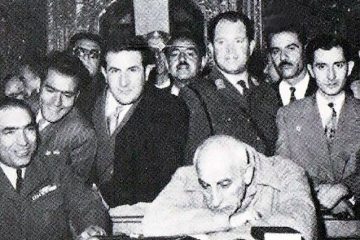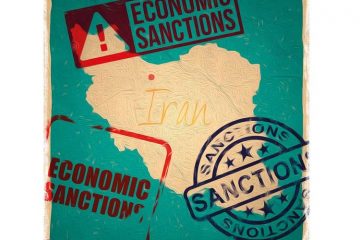The Role of US Dollars in the Coup d’État of August 19, 1953
After the exile of Reza Shah Pahlavi and at the beginning of the reign of Mohammad Reza instead of his father, due to his inexperience, we witnessed a kind of powerlessness in the realm of the Iranian monarchy; In a way that the tensions of political currents had increased in this country between 1940 and 1950. At that time, about fifteen prime ministers were replaced in Iran, and on the other hand, after the end of World War II, independence and anti-imperialist movements flourished in the world. In this regard, in the first election after Reza Shah, Dr. Mohammad Mossadegh, a member of the National Front of Iran who had a nationalist and anti-imperialist view, was elected as the representative of Tehran with the most votes and in his first plan, didn’t give the permission to the government to conduct negotiations with foreign countries during the occupation of Iran.
After the approval of the bill on the nationalization of the oil industry on May 9, 1951, the parliament, which was strongly influenced by the popularity of Mossadegh, declared with a majority of votes its desire for him to become the prime minister of the Shah. Mossadegh accepted the post of prime minister on the passage of the law regarding to the implementation of the oil nationalization plan would be approved by the parliament; because the Shah had no choice but to accept the decree of the Prime Minister Mossadegh and the law he intended. However, the British government, which for 50 years had been able to present itself as a symbol of British greatness in the Middle East, refused to accept the law until late July 1951, and even prepared plans for a military occupation of Abadan which due to the opposition of the Americans did not happen.
US Role in Removing British oil dominance
Dissatisfied with the British monopoly over Iran’s oil industry, the United States supported the nationalization of Iran’s oil industry, which could lead to the elimination of British influence in Iran. But US fears of Iran’s management of oil production and sales, and it’s becoming a model for other oil-rich countries in the region, have led to concerns about Mossadegh’s nationalist actions and reason for his removal.
Iran’s Internal Strife and the United States’ Abuse of Such a Position
The rise of Mossadegh and the decline of the monarchy at that historical time period had led to an increase in anti-imperialist uprisings in society, and this had weakened the position of Mohammad Reza Pahlavi in the country. The Shah was afraid of this political atmosphere and therefore took away his decision-making power. In this regard, General Fazlollah Zahedi, who was also in the government cabinet for a short period of time as the interior ministry and was fired by Mossadegh, was dreaming of running for the post of Prime Minister. Among the factors that enabled Zahedi to be able to persuade the people against Mossadegh and also replace him are:
- Disagreement over dismissals and political installations among nationalists
- Impunity for the perpetrators of the July 21, 1952 massacre, despite Mossadegh’s pursuits
- Mr. Kashani and other scholars of the seminary of Qom being afraid of Mossadegh’s leftist actions
- Mossadegh’s decision to dissolve the 17th parliament through a referendum
- The United States unwavering support for Zahedi
US Support for Zahedi
The United States, in coordination with members of the royal family, especially Ashraf Pahlavi, formally supported Zahedi to rise up against Mossadegh’s government. In this regard, General Norman Schwarzkopf, as a former adviser to the Gendarmerie, arrived in Tehran to organize the coup forces with funds donated by the CIA in the amount of $ 5 million, and left the country after meeting with a group of officers and General Zahedi. After that, Kermit Roosevelt, as the CIA’s Middle East director, entered Iran under a pseudonym called James F. Lockridge, and after his presence, we witnessed an increase in coup movements against Mossadegh. One of the methods of Roosevelt’s psychological operations, in addition to money laundering, was the use of media outlets with cartoons and newspaper articles against the then Prime Minister. After media efforts, finally on August 2, 1953, Roosevelt was able to meet with the Shah and discuss the coup plan and ouster of Mossadegh, as well as Zahedi’s replacement. In this coup, the main commander was Kermit Roosevelt, and Colonel Zahedi was just a symbol and an actor directed by the United States.
Step by Step with the Implementation of the American Coup
- General Schwarzkopf, an American expert who had been in charge of organizing the city police force from 1942 to 1948 and had established a close relationship with Zahedi (as the police chief at the time), arrived in Iran to prepare for the coup.
- Anne Dulles and her brother Foster Dulles, as US Secretary of State and US Ambassador to Iran and Switzerland, met with Ashraf Pahlavi and asked her to prepare for Mossadegh’s ouster and Zahedi’s replacement.
- The CIA Psychological Operations Team began secret activities and carried out a series of influential operations in the Tudeh Party, staging demonstrations in the name of the Tudeh and against the Shah. The purpose of these actions was to show the anti-national and anti-religious attitude of the Tudeh Party. Wilbur, which was an American advisor and psychological war specialist, was in charge of the series for this mission.
- On August 13, 1953, the Shah signed a decree dismissing Mossadegh and installing Zahedi and left Iran. The informant, Colonel Nasiri, was surrounded by Mossadegh’s military forces when he went after Mossadegh.
- The arrival of the US Ambassador Louis Henderson in Tehran to meet with Mossadegh and announce the lack of US support for him, as well as the need for Mossadegh to step down as prime minister; this was met with opposition and reprimand from Mossadegh to the American side.
- Henderson contacts his liaisons in Iran and announces official support for Zahedi as Iran’s Prime Minister
- Louis Henderson spent a 32 billion and 600 million Rial check for the coup on 18 August, and Schwarzkopf gave the money to anti-Mossadegh groups. Some Iranians suddenly became rich in those years, and even Mossadegh’s supporters took action against him because of financial problems. The poor people revolted against Mossadegh under the influence of the money offered and the government of the National Front was overthrown.
In conclusion, the most important and influential role of the United States in the coup d’état of August 19, 1953, was to fund the coup, which Roosevelt said in an interview with the Los Angeles Times: “$1 million to stage street demonstrations to overthrow Mossadegh’s nationalist government which left 300 dead, was at our disposal and about $ 75,000 of that was spent and the rest of the money was put in a safe and it will be handed over to the king after the operation.”
References
The Middle East, Oil and the Great Powers, Benjamin Shwadran
Power Play: The Tumultuous World of Middle East Oil, Leonard Masley



0 Comments